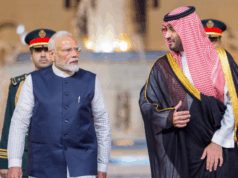
During Operation Sindoor, the Indian armed forces executed a highly coordinated campaign leveraging both indigenous civil and military space-based assets to achieve strategic, operational, and tactical objectives. The operation showcased India’s growing reliance on space technology for modern warfare, particularly in surveillance, reconnaissance, targeting, and communications.
India’s indigenous space capabilities, primarily through ISRO, played a pivotal role. The CARTOSAT series of satellites, renowned for their high-resolution imagery and dual-use (image and video) capabilities, were instrumental in providing detailed intelligence for operational planning and target acquisition. CARTOSAT-2C, for instance, delivers imagery with a resolution of 0.65 metres, enabling commanders to make precise decisions based on clear, actionable intelligence. These assets have a proven track record, having supported previous operations such as the 2016 Surgical Strike.
Complementing optical satellites, the RISAT (Radar Imaging Satellite) family provided critical radar imagery. This was especially valuable for tracking movement and monitoring targets regardless of weather conditions or darkness, overcoming the limitations of conventional optical satellites. The GSAT family supported secure satellite communications for command and control.
To enhance the frequency of surveillance ( present our own assets are fewer in number ), the Indian armed forces also procured internationally available commercial satellite data, for high-resolution satellite imagery. These data, available with greater temporal frequency than domestic assets, enabled near-real-time monitoring of key areas of interest.
Additionally, ISRO facilitated access to repeatable commercial data streams, further strengthening reconnaissance capabilities. Indian forces also utilized data from commercial operator, ensuring a comprehensive and multi-sourced intelligence picture.
ISRO officials confirmed that all available strategic assets-estimated at 9-11 dedicated military satellites-were mobilized for the operation. The synergy between domestic and commercial data sources allowed India to overcome the periodicity limitations of its own satellites, which typically provide area-specific downloads once every 14 days, by supplementing with commercial imagery available as frequently as once per day.
Looking ahead, India is set to further augment its military space capabilities. The upcoming launch of EOS-09 (RISAT-1B), featuring advanced C-band synthetic aperture radar, will significantly enhance India’s all-weather, day-and-night surveillance capacity. This satellite is part of a broader plan to launch 100-150 satellites in the next five years, including 52 under the Space-Based Surveillance-3 (SBS-3) programme, with increasing private sector participation.
Operation Sindoor marked a milestone in India’s integration of strategic space assets into military operations. By combining ISRO’s domestic satellites with high-frequency commercial imagery, the Indian armed forces achieved superior situational awareness, precision targeting, and robust command and control-decisively contributing to the operation’s success and setting a new standard for future military engagements.
It is hoped that sooner than later, our Defence Space Agency will get upgraded to full fledged tri services Command.




